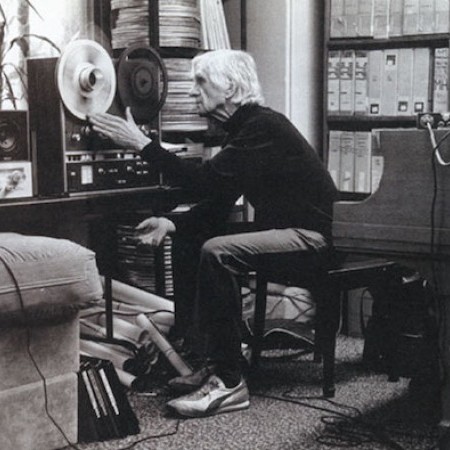
Gil Evans (1912–1988)
(Photo: Carol Friedman/gilevans.com)“A characteristic voicing for the Thornhill band was what often happened on ballads. There was a French horn lead, one and sometimes two French horns playing in unison or a duet depending on the character of the melody. The clarinet doubled the melody, also playing lead. Below were two altos, a tenor, and a baritone, or two altos and two tenors. The bottom was normally a double on the melody by the baritone or tenor. The reed section sometimes went very low with the saxes being forced to play in a subtone and very soft.
“In essence,” Evans clarifies, “at first, the sound of the band was almost a reduction to an inactivity of music, to a stillness. Everything—melody, harmony, rhythm—was moving at a minimum speed. The melody was very slow, static; the rhythm was nothing much faster than quarter notes and a minimum of syncopation. Everything was lowered to create a sound, and nothing was to be used to distract from that sound. The sound hung like a cloud.
“I should add, incidentally, that Claude’s desire was to avoid unnecessary activity even extended to the correction of mistakes. There was a minimum of discussion of the music. He hated to correct an error. ‘Find it yourself,’ was his attitude. If a guy was out of tune, Claude would touch the fellow’s note as he was passing through the harmony part on the piano, to show him the way it should be played instead of telling him.
“But once this stationary effect, this sound, was created, it was ready to have other things added to it. The sound itself can only hold interest for a certain length of time. Then you have to make certain changes within that sound; you have to make personal use of harmonies, rather than work with the traditional ones. There has to be more movement in the melody—more dynamics, more syncopation, speeding up of the rhythms.
“For me, I had to make those changes, those additions, to sustain my interest in the band, and I started to as soon as I joined. I began to add from my background in jazz, and that’s where the jazz influence began to be intensified.”
The next addition Thornhill made in modern band instrumentation was the tuba.
“In the old days,” Gil explains, “the tuba had been used mainly as a rhythm instrument. The new concept with Thornhill started when Bill Barber joined the band, around the middle of 1947 or in 1948. Claude deserves credit, too, for the character of the sound with tuba added.”
Gil returned to the jazz aspects of his work with Thornhill, saying, “I wrote arrangements of three of Bird’s originals, “Anthropology,” “Yardbird Suite” and “Donna Lee.” And I also got to know Charlie well. We were personal friends, and were roommates for a year or so. Months after we had become friends and roommates, he had never heard my music, and it was a long time before he did.”
(Gerry Mulligan explains: “What attracted Bird to Gil was Gil’s musical attitude. How would I describe that attitude? ‘Proving’ is the most accurate word I can think of.”)
“When Bird did hear my music,” Gil continued, “he liked it very much. Unfortunately, by the time he was ready to use me, I wasn’t ready to write for him. I was going through another period of learning by then.
“As it turned out, Miles, who was playing with Bird then, was attracted to me and my music. He did what Charlie might have done if at that time Charlie had been ready to use himself as a voice, as part of an overall picture, instead of a straight soloist.”